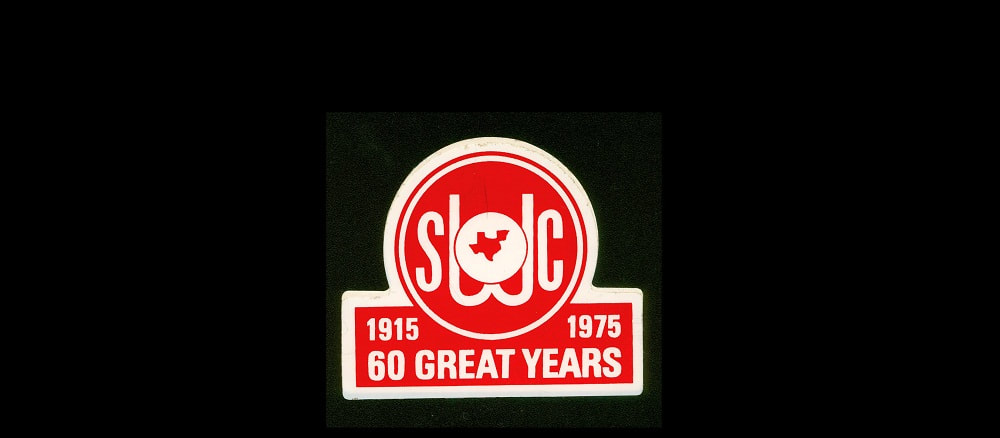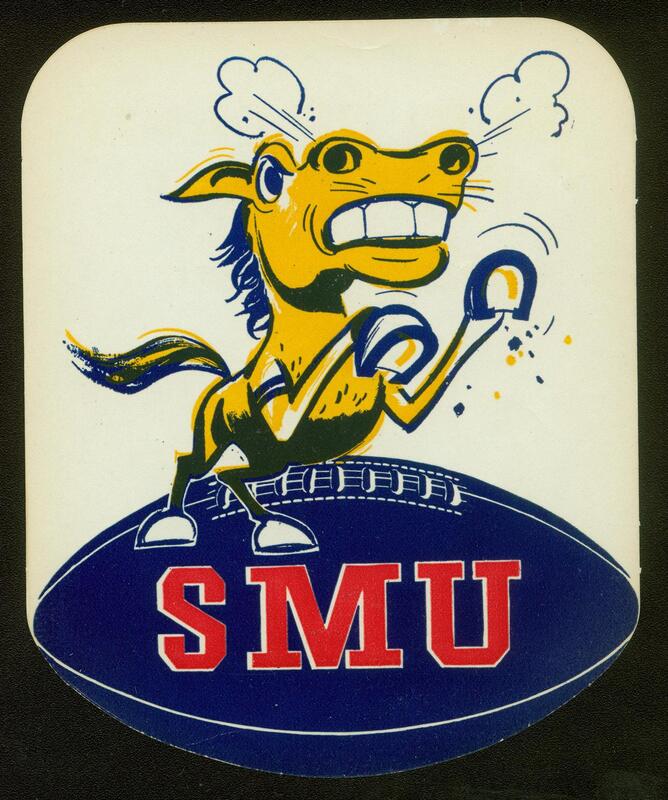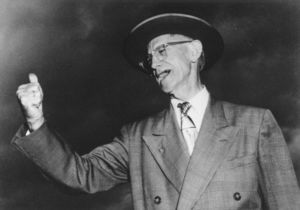|
With only 365 days in a year, a single date is bound to have multiple important events occur. You can Google any date and you will find dozens of historical events that happened on that day. When you start talking about sports, the range of dates is significantly narrowed, as events overwhelmingly happen during the sport’s season of play. However, this post will discuss the invention of two lasting traditions that were born on the same day – October 25. October 25, 1917 Southern Methodist University was founded in 1911 (although classes didn’t begin until 1915). Just two years later, SMU’s President – Robert Stewart Hyer – would get a new secretary, a lady by the name of Dorothy Amann. Amann had been born in Mississippi, but was raised in Smithville, Texas. After graduating high school, Amann went to the Eastman College of Business in Poughkeepsie, New York. Once she left Poughkeepsie, Amann worked several jobs throughout the South before eventually landing in a small law office in Midland, Texas. That is where she was when she heard from Frank Reedy, the head of SMU’s finances, in 1913. Reedy was looking to personally recruit Amann to work for SMU. Although she was studying law, Amann was ready for a change and so she took a chance and joined President Hyer, Reedy and two accountants in Dallas (the five of them would constitute the entirety of the SMU administration at the time). Bringing passion, energy and good cheer, Amann made an immediate impact at SMU. Amann would work tirelessly in many facets for the University with one of her biggest accomplishments being the establishment and organization of the SMU library. However, Amann will enter our story in the realm of athletics rather than academics. SMU played their first season of football in 1915 and were unofficially known as the Parsons due to the high number of theology students on the team. Under the direction of Ray Morrison, SMU struggled mightily in those early days. In 1915, the team finished with a record of 2-5, followed by an even poorer record of 0-8-3 in 1916. In fact, SMU would only see two winning seasons from 1915-1922, a 5-4-1 season in 1919 and a 6-3-1 season in 1922. In 1923, the school would finally see their first great gridiron success, as the team finished 9-0 and won the Southwest Conference. However, while the football team struggled to succeed, the SMU women’s basketball team earned immediate success. When the girls won a state title in basketball, the school decided an official mascot needed to be decided upon to represent SMU’s athletic teams. Like most contests to decide a mascot, SMU had many options. The student body submitted options ranging from Bulls and Rams to Comanches and Rattlers. On October 17, 1917 a group of three finalists were presented at a pep rally. The finalists were Bisons, Greyhounds and Mustangs. Of course, the student body selected Mustangs and the mascot was made official on October 25, 1917. Any idea who submitted Mustangs as a potential mascot for the school? If you guessed Dorothy Amann, you’d be correct. From her office in Dallas Hall, Amann had a perfect view of the football team’s practiced field. Watching the team run through drills and play in games, Amann commented that they looked like “a bunch of wild Texas mustangs” and, unknowingly, the school mascot was born. Although it’s debated, Amann may have been an inspiration in naming an American icon – this time in the 1960s. As Ford was designing what would become their most iconic car, the Mustang, Ford’s President, Lee Iacocca attended a Michigan Wolverines college football game. The highly-favored Wolverines would be taking on a small school from Texas led by Hayden Fry – SMU. SMU would eventually lose the game 27-16, but it is rumored that Iacocca entered the SMU locker room after the final whistle, announcing that SMU’s fighting spirit and ingenuity against a more powerful opponent had inspired him to name Ford’s concept car after them. As a part of this, Ford would use SMU’s Mustang logo for the car. While the SMU Mustang always runs facing right, Ford’s Mustang logo would always run facing left. Of course, this version of events is challenged and, more often than not, the Ford Mustang name is credited to designer John Najjar, who was a fan of the P-51 Mustang fighter plane, or to a Ford market research analyst, Robert Eggert, who was a breeder of quarter horses. Of course, as a football fan and a Texan, I choose to believe the Iacocca version of events.
One specific case is the A&M hand sign, also known as a “Gig ‘Em.” At the center of the story was an A&M Regent, named Pinky Downs. Downs is remembered as an Aggies’ Aggie, wearing maroon ties daily and always ready with a warm welcome. Downs was also the kind of Aggie who liked to get a rise out of UT at any opportunity (he once encouraged the school to spend an extra $10,000 when building a swimming pool to insure it was bigger than the pool at UT). So, at the Midnight Yell (a tradition that began in 1913) on October 25, 1930 before A&M played TCU, Downs, in his normal fervor, yelled, “What’re we going to do to those Horned Frogs?” Using a common frog-hunting term, Downs replied to his own question, “Gig ‘em Aggies!” while extending his arm with his hand in a fist and his thumb pointing straight up. While Texas A&M would lose the game 3-0, the Southwest Conference had its first hand sign. Texas Monthly summed up the whole ordeal best, when, in 1988, they said, “The primordial image of sticking frogs with a spear captured the essence of Aggieness – a good ol’ farm boy who was not so much unsophisticated as anti-sophisticated.” While the Aggies continued to use the “Gig ‘Em” and the hand sign from that point on, the tradition didn’t immediately catch on with other schools. In fact, not until 25 years later, did another SWC school pick up the idea. Led by Harley Clark, a UT cheerleader, Texas would be second to join the hand sign fad. Perhaps ironically, at a pep rally before the 1955 TCU game, Clark extended what is now the well-known “Hook ‘Em” symbol and the SWC had their second hand sign (similar to Texas A&M, the sign did no good when facing the Frogs the next day – TCU won 47-20). Of course, once the two major state schools had hand signs, everyone wanted one. SMU came next, changing their unofficial “V” (for victory) hand sign to an official, slightly bent “V” for pony ears. Baylor followed with the “Bear Claw” in 1960, however, it was ridiculed by most on campus and not until it was accepted by Grant Teaff was the hand sign made official in 1972. In 1971, not to be left behind, Texas Tech’s Saddle Tramps introduced the “Guns Up” while U of H added their own hand sign in 1972 as a part of their way of seeking acceptance in the SWC. TCU would be the last to join when the “Horned Frog” hand sign came into being in 1980. While Rice has used a hand sign, the school has never officially sanctioned it due to concerns (or, perhaps, awareness) of possible alternative meanings or intentions to the sign (a middle finger is involved). The only SWC school to never join the hand sign tradition, not surprisingly, was Arkansas. This article was written and researched by Ryan Sprayberry, Collections and Exhibits Manager at the Texas Sports Hall of Fame
Comments are closed.
|
Archives
November 2023
Categories |
Contact1108 S. University Parks Dr.
Waco, Texas 76706 |
© Texas Sports Hall of Fame. 501(c)(3). All rights reserved.




 RSS Feed
RSS Feed
